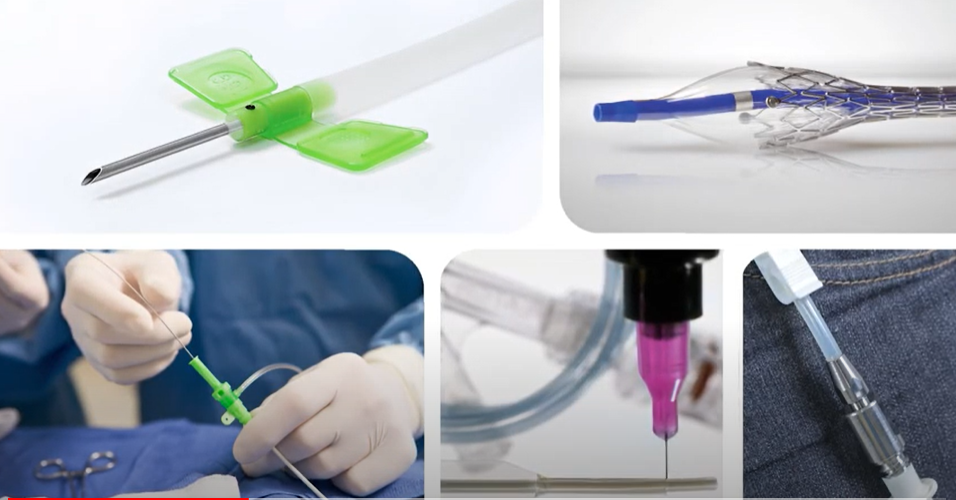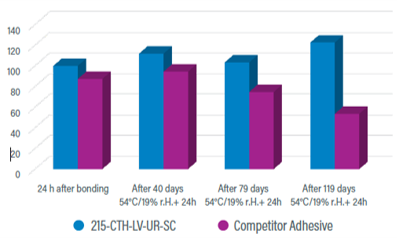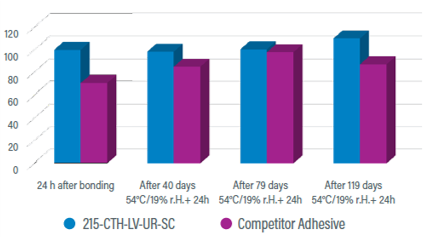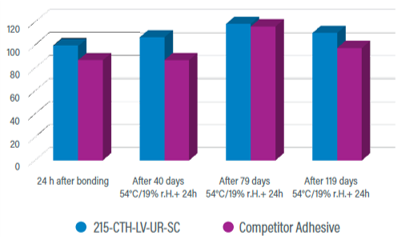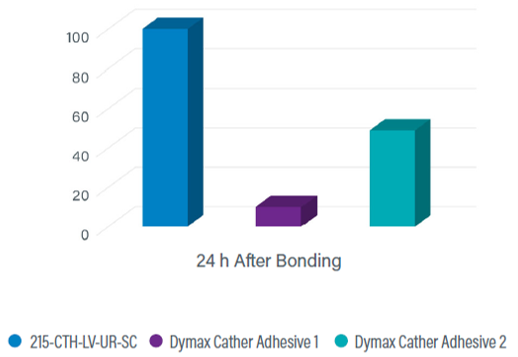Sustratos de pegado de catéteres
Los sustratos utilizados en los diseños de catéteres actuales, como el PEBA y el nailon 12, suelen ser difíciles de unir. Si los componentes no se adhieren correctamente, puede producirse un fallo en el dispositivo terminado. Para evitar que esto suceda, los ingenieros de dispositivos médicos se dedican a encontrar adhesivos que cumplan con criterios de prueba estrictos, como un rendimiento excelente en cuanto a resistencia a la tracción, resistencia al desprendimiento, presión de rotura y envejecimiento acelerado.
Cada año se utilizan millones de catéteres, desde los internos hasta los intermitentes y los externos, para tratar una variedad de afecciones médicas, como la vejiga neurogénica, las infecciones urinarias y las lesiones de la médula espinal. Cuando se utilizan a diario, los ingenieros, el personal médico y los pacientes no pasan por alto la importancia de contar con un conjunto de catéter confiable. Un catéter no solo debe soportar la fuerza constante de inserción y extracción y no degradarse con el tiempo, sino que también debe ser biocompatible para evitar la irritación o una posible infección. Algunas de las aplicaciones asociadas con la fabricación de catéteres incluyen la denervación renal, la pegado con balón, la intervención vascular, las bandas marcadoras y las uniones de colectores. Es por eso que la resistencia a la tracción y el rendimiento frente al envejecimiento son fundamentales para el diseño general del catéter.
El Dymax Serie de adhesivos 215-CTH-UR-SC Se desarrolló para abordar los problemas de unión confiable de sustratos de catéteres difíciles de unir y las preocupaciones por el envejecimiento. Los adhesivos se curan "a demanda" en segundos tras la exposición a la luz visible/UV y también están optimizados para LED. Otras características deseables de esta línea de productos incluyen:
• No se añaden disolventes.
• Biocompatibilidad
• Adherencia a una variedad de sustratos plásticos.
• Monocomponente, sin mezcla.
• Certificación ISO 10993
• Compatible con esterilización por EtO, rayos gamma y haz de electrones
• Abarcar ® tecnología Para confirmación visual de la colocación del adhesivo y curado y postcurado con fluorescencia para inspección.
Se completó un estudio comparativo en cinco pares de conjuntos de tubo a conector utilizando diferentes combinaciones de sustratos junto con 215-CTH-LV-UR-SC En comparación con un material de la competencia. La prueba de tracción se realizó con una máquina de prueba de tracción Zwick y los resultados muestran que el adhesivo Dymax fue entre un 10 % y un 30 % más resistente que un material de la competencia. Los gráficos a continuación brindan una idea de los detalles completos.
Conector tubo-PC PEBAX 55D
Conector tubo-PC PEBAX 72D
Conector de tubo TPE-PVC
En la parte del estudio sobre el desempeño en materia de envejecimiento, 215-CTH-UR-SC se sometió a un envejecimiento acelerado con calor seco a 54 °C y mantuvo su resistencia de adhesión incluso después de tres años en comparación con un producto anterior de Dymax. La siguiente tabla muestra los resultados. Se pueden encontrar cuadros de envejecimiento adicionales en la guía de venta del producto que se incluye a continuación.
Para los fabricantes que buscan un adhesivo para pegado de catéter que cumpla con estándares de rendimiento críticos en cuanto a resistencia y envejecimiento, la serie Dymax 215-CTH-US-SC puede ser una buena opción para su aplicación específica.
Descubra los detalles completos de este estudio descargando nuestra guía de ventas.


